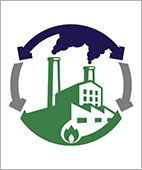
LIFE Project: Cost-effective CO2 capture, hydrogenation, and conversion into fuel in energy-intensive industries
- Type Project
- Status Filled
- Execution 2019 -2021
- Assigned Budget 2.138.337,00 €
- Scope Europeo
- Autonomous community Cataluña
- Main source of financing LIFE
- Project website Web del proyecto
Energy-intensive industries need to reduce their greenhouse gas (GHG) emissions and energy consumption from fossil fuels. One possible way to achieve this is through carbon dioxide hydrogenation (which involves the reaction of hydrogen with CO2 to produce methane and water, known as the Sabatier process). This process is well known but has never been implemented on an industrial scale due to several technical limitations, such as the need for hydrogen and temperature issues. A recently developed laboratory reactor has succeeded in capturing GHG emissions and producing synthetic fuels and/or petroleum products through an innovative catalytic hydrothermal process.
Demonstrating a cost-effective technology to capture CO2 and convert it into new energy sources and hydrocarbons would allow energy-intensive industries (including steel) to reduce their GHG emissions and energy needs. These companies participate in the EU's emissions trading system.
The main objective is to build and test a pilot plant capable of capturing 800 tons of CO2 generated in the steel production process and transforming it into hydrocarbons. This is done to demonstrate that the innovative process technology used in the pilot plant is efficient and cost-effective, and that the resulting hydrocarbons can be reused in the production chain of an energy-intensive steel plant.
Demonstration of a pilot plant that captures CO2 from a furnace exhaust and converts it to methane through hydrogenation. Cost-effective hydrogen production using a novel catalytic hydrothermal process that generates oxyhydrogen (synthetic fuels and petroleum products). Validation testing using 800 tons of CO2 per year (one year of validation). Environmental quantification and validation. Development of dissemination activities to ensure replicability and transferability.
- Coordinator/entity name: Paola Baldivieso
- Postal address: C/ de la Ferralla 12, Pol. Ind. San Vicente, 08755, Castellbisbal (Barcelona)
- Coordinator/entity email:
- Compañía Española de Laminación SL
- HE(Hydrocarbons Engineering SL)







